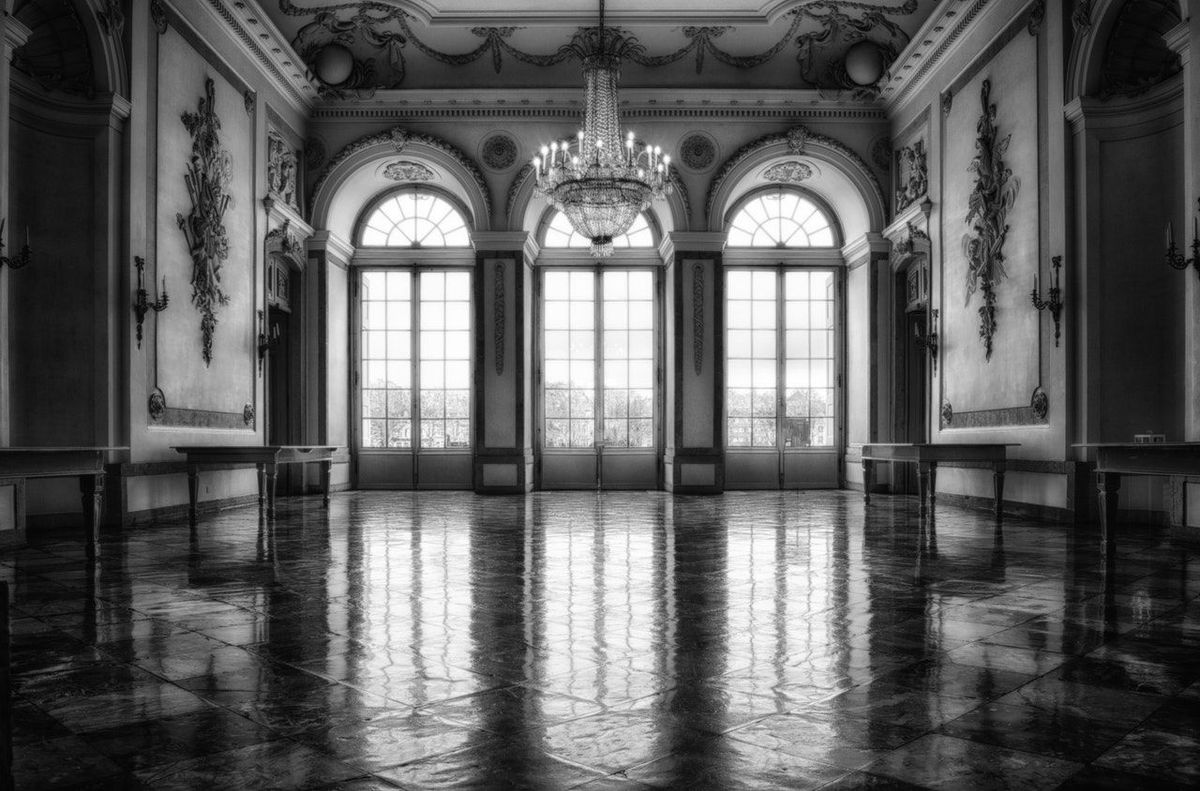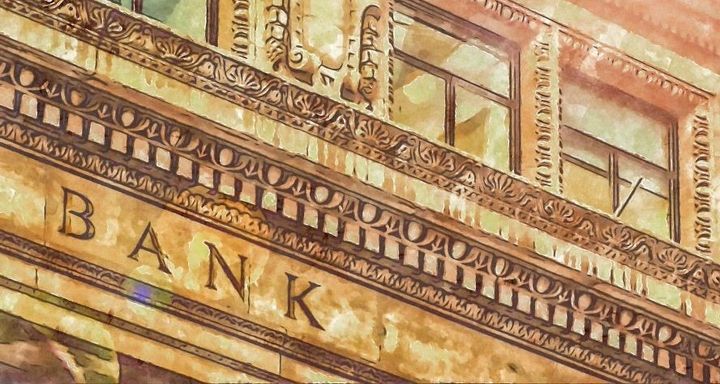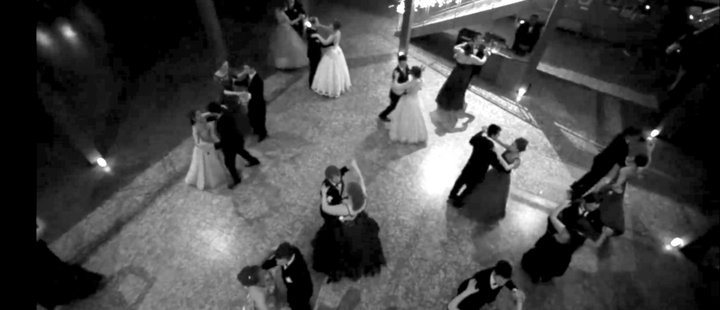What in the World is Wrong with Art?

"Art" is a word with multiple connotations and associations.
For some, art means refinement and culture. For many others, it means snobbery and affectation. The word instantly conjures the mental image of pretentious pseudo-intellectuals in black turtlenecks, pondering and pontificating upon an "avant garde" work that bears a striking resemblance to a toddler's finger-painting, or to a pile of carefully arranged garbage.
And where art is not incomprehensible, it is offensive.
The classic example is a picture by Robert Mapplethorpe; a crucifix in urine is among his most striking. With such examples as these and countless more available, it is no wonder that when talking of art, it is commonly held by both the intelligentsia and the common man that it is a field only for the academic, the artistic, or the independently wealthy.
It is helpful, I think, to revisit how art was originally viewed and practiced, and how the modern interpretation of artistic expression fails to live up to the original intention, or even the name of art.
Art has been around since prehistory. Cave paintings dating back to Man's earliest times have been discovered all over the world. While it is impossible to determine what the reasons were for their creation, theories abound. Whether they were used for religious or superstitious purposes, or used for storytelling, or simply as a means of self-expression remains the subject of much debate.
For our purposes, let us say simply that Man has created art for a very long time.
We know that in ancient times around the world, art was often used in connection with religious practice, and for the purpose of displaying their cultures' ideas of beauty. It was often employed in adorning the highest truths and virtues of each culture.
While artists were employed in ancient times by the wealthy, their art was almost always tightly connected to the lives, thoughts, and expressions of all the classes of people. This was made even more apparent by two events.
The first was the Black Death, which swept Europe in 1347 and left a vast amount of wealth behind it, which enriched the survivors greatly across all classes. The second event was the Renaissance, which placed a huge emphasis on learning and practicing the arts.
In these environments, art became as much a conduit for the thoughts and expressions of the working class; the craftsmen, the artisans, and the artificers, as it had been a status symbol for the wealthy. The idea that art was primarily concerned with the display of beauty was entrenched and quite nearly universal, and it continued into the age of enlightenment.
At this point in history, while it is true that the rich aristocracy determined what was en vogue, through the patronage of an artist or class of artists, it was the working class who were the main purveyors and supporters of art, and, following the Reformation, became the recognized critics and censors of art. Additionally, it was the working, middle class who supplied (and continue to supply) the greatest number of artists.
The connection between art and the working class was repeatedly demonstrated by numerous artists who made their living and their greatest contributions to art, capturing the likenesses of working families or even other artists. The working class wielded "the keys of the kingdom" through allowing or forbidding art; by the buying or boycotting of art.
It was most often these communities who ultimately decided which art was worthwhile and which was worthless. This "test of the common man" determined what art would thrive and what would fail, and it became a ruling on which art was "good" and which was "bad."
From the Renaissance to the Age of Enlightenment, art and artists were held to a rigorous set of standards with the working class ultimately sitting as judge.
It was Percy Bysshe Shelley who popularized the idea – regarding poetry – that "only a poet may determine what is good poetry." This idea was taken up by other poets who, tired of restraints placed upon them by the "unenlightened," began to discard the opinions of the working class while still courting the favor of the wealthy.
Soon, the artistic community took up the same cry, and the idea was voiced by numerous poets, among them Poe, Eliot, and Auden. The artistic world wholeheartedly threw off the idea that anyone not a recognized master of the craft had the right to tell them that their work was in any way sub-par.
C.S. Lewis brilliantly attacked this argument in his essay, An Experiment in Criticism, where he points out that if only a poet may determine which poets are good, then we must wait for the "good poets" to inform us who is a poet so that we may listen to his opinion about which poets are good.
Regardless of the internal inconsistencies and mental gymnastics required to wrap their heads around this worldview, the idea only artists could judge art began to take hold. Without the guidance and structure of the middle class holding art to standards and requiring artists to make their work desirable, and therefore profitable in the slightest, art began to change in inexplicable ways.
Art, rather than being viewed as for displaying beauty, became about "artistic expression."
Whatever people got out of art was merely a byproduct of the act of artistic creation, and thus divorced so forcibly from reason, art became the plaything of the wealthy alone, who (as always) gained social standing defying traditional conventions through the patronizing of artists; the more daring and strange, the better.
Now with the demand or market for good art depressed, there grew an increasing demand for shocking, lurid, and progressive art. As art became more strange and ugly, the meaning and definition of art shifted still further. Now, art could be whatever one wanted it to be, could say whatever one wanted it to.
Art could now be anything, as long as it was by someone recognized as an artist.
Urinals and old bicycle wheels were hung on walls with sardonic signatures scrawled onto them. Like the Emperor with No Clothes, to admit to confusion in the face of the wave of new art would be to state loudly that you "didn't get it," a confession bearing a death sentence for the social life of the socialite, the academic, or the refined.
The point of art now was to elicit a response from the audience, to "make them feel something."
Usually, the response most sought from audiences was anger. Performance art began to appear; individuals engaged in bizarre, angry, offensive, or comic behavior in front of strangers whose responses made up "art."
But in the increasingly cynical, jaded, and cosmopolitan atmosphere of the art world, which was evermore practiced at heralding each new permutation as revelation, it became correspondingly harder to incite outrage or even elicit a response beyond bland compliments.
Art became increasingly ugly and pointless, eventually clamoring loudly and angrily for a backlash, which the Art world was now practiced at not giving.
And so, the goal of the art world changed again. In 2011, the Wall Street Journal interviewed the curator of the Museum of Contemporary Art in New York City, who stated that the object of art is to come to "a place of acceptance," a place where "there's no response" to what you see.
One of the pieces on display was a suspended, stretched monstrosity that evoked the image of a dead and rotting horse. Another was a lit up cube with the image of Tweety Bird surrounded by mirrors, each displaying the manically grinning Looney Toons icon.
Where art is divorced from the working class, it inevitably becomes an echo chamber of descending madness. Where art has either remained the province of the working class, or become one, it thrives and is largely due to technological advances.
Long ago, books required immense amounts of labor to produce and were only available to the immensely wealthy. Music was divided into "High Art" which could only be enjoyed in a concert hall or private performance, and "Low Art", which was looked down upon as uneducated and simple.
With the advent of the printing press, books were suddenly available to everyone for mere pennies. With the invention of musical recordings, classical works could suddenly be enjoyed without entrance into a symphony hall or private concert.
The last artform to become a province of all of the classes of men was that employing the camera. Artists can now learn mastership of their craft, focusing on lighting, composition, and numerous other principles without first needing to learn how to make ink, mix paint, or make canvas.
This is not to say that good art is not still being made across all of the artforms.
It is a vain conceit of every age to say previous age was the "Golden Age" when the masters worked, "but now there are no great works being produced." Great artists have lived in every age, and many truly great and wonderful works are continually produced.
Where the writer takes issue is with the pseudo-intellectual "Artworld," and with the casual dismissal by the working man that since he is not an artist, he is uninvolved with art.
To paraphrase, "All that is necessary for Evil (Art) to succeed is for good (regular) men to do nothing."
This essay is primarily concerned with how art has suffered without the regular man, which is stark and clear. Everything that I can point to: abysmal museum attendance, dropping school art programs, and a growing division between artists and real life, all argue that art needs Man.
What is subtle, debatable, and unclear is why Man needs art.
I submit that we create art by our natures, and divorcing ourselves from art divorces us from ourselves. I think that, all things aside, Ancient Man created art simply because He was Man.




